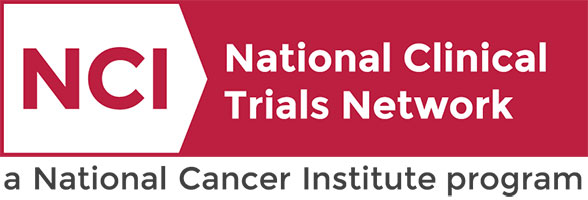Patient Search
 |
 |
|
KaCrole Higgins was diagnosed with breast cancer in 2020. “In May 2020, I found a lump in my breast. I cried. By June, it was diagnosed as breast cancer, triple positive, stage 1A. While getting this cancer diagnosis was devastating, it also became an opportunity. Suddenly, the cancer gave me clarity. It gave me clarity about what was important, what was good in my life, what was toxic in my life, and what I needed to do.” Click below to read more of KaCrole’s story |
If Landon Ryan had been diagnosed with bilateral retinoblastoma 10, 20 or 30 years ago, she might not be here today with nearly perfect vision.Thanks to recent improvements in the treatment for this rare form of cancer that almost exclusively affects children under the age of 5, the diagnosis had the power to change Landon’s life when she was 11 months old, but not to take it — or her eyesight. Click below to learn more about Landon and her story. https://momentum.vicc.org/2022/04/brighter-outlook/ |
Ensartinib in Treating Patients with Relapsed or Refractory Advanced Solid Tumors, Non-Hodgkin Lymphoma, or Histiocytic Disorders with ALK or ROS1 Genomic Alterations (A Pediatric MATCH Treatment Trial)
Multiple Cancer Types
This phase II Pediatric MATCH trial studies how well ensartinib works in treating patients with solid tumors, non-Hodgkin lymphoma, or histiocytic disorders with ALK or ROS1 genomic alterations that have come back (recurrent) or does not respond to treatment (refractory) and may have spread from where it first started to nearby tissue, lymph nodes, or distant parts of the body (advanced). Ensartinib may stop the growth of tumor cells by blocking some of the enzymes needed for cell growth.
Germ Cell (Pediatrics),
Miscellaneous,
Neuroblastoma (Pediatrics),
Pediatric Lymphoma,
Pediatric Solid Tumors,
Pediatrics,
Wilms / Other Kidney (Pediatrics)
II
Borinstein, Scott
NCT03213652
COGAPEC1621F
A Study to Compare Early Use of Vinorelbine and Maintenance Therapy for Patients with High Risk Rhabdomyosarcoma
Multiple Cancer Types
This phase III trial compares the safety and effect of adding vinorelbine to vincristine, dactinomycin, and cyclophosphamide (VAC) for the treatment of patients with high risk rhabdomyosarcoma (RMS). High risk refers to cancer that is likely to recur (come back) after treatment or spread to other parts of the body. This study will also examine if adding maintenance therapy after VAC therapy, with or without vinorelbine, will help get rid of the cancer and/or lower the chance that the cancer comes back. Vinorelbine and vincristine are in a class of medications called vinca alkaloids. They work by stopping cancer cells from growing and dividing and may kill them. Dactinomycin is a type of antibiotic that is only used in cancer chemotherapy. It works by damaging the cells deoxyribonucleic acid (DNA) and may kill cancer cells. Cyclophosphamide is in a class of medications called alkylating agents. It works by damaging the cells DNA and may kill cancer cells. It may also lower the bodys immune response. Vinorelbine, vincristine, dactinomycin and cyclophosphamide are chemotherapy medications that work in different ways to stop the growth of cancer cells, either by killing the cells, by stopping them from dividing, or by stopping them from spreading. This trial may have the potential to eliminate rhabdomyosarcoma for a long time or for the rest of patients life.
Pediatrics,
Sarcoma
III
Borinstein, Scott
NCT04994132
COGARST2031
Inotuzumab Ozogamicin and Post-Induction Chemotherapy in Treating Patients with High-Risk B-ALL, Mixed Phenotype Acute Leukemia, and B-LLy
Multiple Cancer Types
This phase III trial studies whether inotuzumab ozogamicin added to post-induction chemotherapy for patients with High-Risk B-cell Acute Lymphoblastic Leukemia (B-ALL) improves outcomes. This trial also studies the outcomes of patients with mixed phenotype acute leukemia (MPAL), and B-lymphoblastic lymphoma (B-LLy) when treated with ALL therapy without inotuzumab ozogamicin. Inotuzumab ozogamicin is a monoclonal antibody, called inotuzumab, linked to a type of chemotherapy called calicheamicin. Inotuzumab attaches to cancer cells in a targeted way and delivers calicheamicin to kill them. Other drugs used in the chemotherapy regimen, such as cyclophosphamide, cytarabine, dexamethasone, doxorubicin, daunorubicin, methotrexate, leucovorin, mercaptopurine, prednisone, thioguanine, vincristine, and pegaspargase or calaspargase pegol work in different ways to stop the growth of cancer cells, either by killing the cells, by stopping them from dividing, or by stopping them from spreading. This trial will also study the outcomes of patients with mixed phenotype acute leukemia (MPAL) and disseminated B lymphoblastic lymphoma (B-LLy) when treated with high-risk ALL chemotherapy.
The overall goal of this study is to understand if adding inotuzumab ozogamicin to standard of care chemotherapy maintains or improves outcomes in High Risk B-cell Acute Lymphoblastic Leukemia (HR B-ALL). The first part of the study includes the first two phases of therapy: Induction and Consolidation. This part will collect information on the leukemia, as well as the effects of the initial treatment, in order to classify patients into post-consolidation treatment groups. On the second part of this study, patients will receive the remainder of the chemotherapy cycles (interim maintenance I, delayed intensification, interim maintenance II, maintenance), with some patients randomized to receive inotuzumab. Other aims of this study include investigating whether treating both males and females with the same duration of chemotherapy maintains outcomes for males who have previously been treated for an additional year compared to girls, as well as to evaluate the best ways to help patients adhere to oral chemotherapy regimens. Finally, this study will be the first to track the outcomes of subjects with disseminated B-cell Lymphoblastic Leukemia (B-LLy) or Mixed Phenotype Acute Leukemia (MPAL) when treated with B-ALL chemotherapy.
The overall goal of this study is to understand if adding inotuzumab ozogamicin to standard of care chemotherapy maintains or improves outcomes in High Risk B-cell Acute Lymphoblastic Leukemia (HR B-ALL). The first part of the study includes the first two phases of therapy: Induction and Consolidation. This part will collect information on the leukemia, as well as the effects of the initial treatment, in order to classify patients into post-consolidation treatment groups. On the second part of this study, patients will receive the remainder of the chemotherapy cycles (interim maintenance I, delayed intensification, interim maintenance II, maintenance), with some patients randomized to receive inotuzumab. Other aims of this study include investigating whether treating both males and females with the same duration of chemotherapy maintains outcomes for males who have previously been treated for an additional year compared to girls, as well as to evaluate the best ways to help patients adhere to oral chemotherapy regimens. Finally, this study will be the first to track the outcomes of subjects with disseminated B-cell Lymphoblastic Leukemia (B-LLy) or Mixed Phenotype Acute Leukemia (MPAL) when treated with B-ALL chemotherapy.
Pediatric Leukemia,
Pediatrics
III
Friedman, Debra
NCT03959085
COGAALL1732
A Study to Investigate Blinatumomab in Combination with Chemotherapy in Patients with Newly Diagnosed B-Lymphoblastic Leukemia
Multiple Cancer Types
This phase III trial studies how well blinatumomab works in combination with chemotherapy in treating patients with newly diagnosed, standard risk B-lymphoblastic leukemia or B-lymphoblastic lymphoma with or without Down syndrome. Monoclonal antibodies, such as blinatumomab, may induce changes in the bodys immune system and may interfere with the ability of cancer cells to grow and spread. Chemotherapy drugs, such as vincristine, dexamethasone, prednisone, prednisolone, pegaspargase, methotrexate, cytarabine, mercaptopurine, doxorubicin, cyclophosphamide, and thioguanine, work in different ways to stop the growth of cancer cells, either by killing the cells, by stopping them from dividing, or by stopping them from spreading. Leucovorin decreases the toxic effects of methotrexate. Giving monoclonal antibody therapy with chemotherapy may kill more cancer cells. Giving blinatumomab and combination chemotherapy may work better than combination chemotherapy alone in treating patients with B-ALL. This trial also assigns patients into different chemotherapy treatment regimens based on risk (the chance of cancer returning after treatment). Treating patients with chemotherapy based on risk may help doctors decide which patients can best benefit from which chemotherapy treatment regimens.
Pediatric Leukemia,
Pediatric Lymphoma,
Pediatrics
III
Smith, Christine
NCT03914625
COGAALL1731
Thoracotomy Versus Thoracoscopic Management of Pulmonary Metastases in Patients with Osteosarcoma
Multiple Cancer Types
This phase III trial compares the effect of open thoracic surgery (thoracotomy) to thoracoscopic surgery (video-assisted thoracoscopic surgery or VATS) in treating patients with osteosarcoma that has spread to the lung (pulmonary metastases). Open thoracic surgery is a type of surgery done through a single larger incision (like a large cut) that goes between the ribs, opens up the chest, and removes the cancer. Thoracoscopy is a type of chest surgery where the doctor makes several small incisions and uses a small camera to help with removing the cancer. This trial is being done evaluate the two different surgery methods for patients with osteosarcoma that has spread to the lung to find out which is better.
Pediatrics,
Sarcoma
III
Borinstein, Scott
NCT05235165
COGAOST2031
Capecitabine Compared to Endocrine Therapy for the Treatment of Non-luminal A Hormone Receptor-Positive Metastatic Breast Cancer
Breast
Breast
This phase II trial compares the effect of capecitabine to endocrine therapy in patients with non-Luminal A hormone receptor-positive breast cancer that has spread from where it first started (primary site) to other places in the body (metastatic). In this study, patients submit a sample of tumor for testing to determine if their breast cancer is considered non-Luminal A. Only patients with non-Luminal A receive study treatment. In the future, doctors hope that this test can assist in picking the best treatment for patients with this type of cancer. Capecitabine is in a class of medications called antimetabolites. It is taken up by tumor cells and breaks down into fluorouracil, a substance that kills tumor cells. Endocrine therapy is treatment that adds, blocks, or removes hormones. To slow or stop the growth of certain cancers (such as prostate and breast cancer), synthetic hormones or other drugs may be given to block the body's natural hormones. Giving capecitabine as compared to endocrine therapy may kill more tumor cells in patients with metastatic breast cancer.
Breast
II
Reid, Sonya
NCT05693766
VICCBRE2256
pB1-11 and TA-HPV Vaccines Combined with Pembrolizumab for the Treatment of Recurrent or Metastatic PD-L1 and HPV Positive Oropharyngeal Cancer
Head/Neck
Head/Neck
This phase II trial tests how well pB1-11 and human papillomavirus tumor antigen (TA-HPV) vaccines in combination with pembrolizumab work in treating patients with oropharyngeal cancer that has come back (recurrent) or that has spread from where it first started (primary site) to other places in the body (metastatic) and that is PD-L1 and human papillomavirus (HPV) positive. Oropharyngeal cancer is a type of head and neck cancer involving structures in the back of the throat (the oropharynx), such as the non-bony back roof of the mouth (soft palate), sides and back wall of the throat, tonsils, and back third of the tongue. Scientists have found that some strains or types of a virus called HPV can cause oropharyngeal cancer. pBI-11 is a circular deoxyribonucleic acid (DNA) (plasmid) vaccine that promotes antibody, cytotoxic T cell, and protective immune responses. TA-HPV is an investigational recombinant vaccina virus derived from a strain of the vaccina virus which was widely used for smallpox vaccination. Vaccination with this TA-HPV vaccine may stimulate the immune system to mount a cytotoxic T cell response against tumor cells positive for HPV, resulting in decreased tumor growth. Immunotherapy with monoclonal antibodies, such as pembrolizumab, may help the body's immune system attack the cancer, and may interfere with the ability of tumor cells to grow and spread by inhibiting the PD-1 receptor. These investigational vaccines could cause or enhance an immune response in the body against HPV, during which time the activity of pembrolizumab against oropharyngeal cancer associated with HPV may be strengthened. These drugs in combination may be more effective in increasing the ability of the immune system to fight oropharyngeal cancer than pembrolizumab alone.
Head/Neck
II
Gibson, Mike
NCT05799144
VICCHN2208
Decitabine and Cedazuridine in Combination with Venetoclax for the Treatment of Patients who have Relapsed Acute Myeloid Leukemia after Donor Stem Cell Transplant
Leukemia
Leukemia
This phase II trial tests how well decitabine and cedazuridine (DEC-C) works in combination with venetoclax in treating acute myeloid leukemia (AML) in patients whose AML has come back after a period of improvement (relapse) after a donor stem cell transplant. Cedazuridine is in a class of medications called cytidine deaminase inhibitors. It prevents the breakdown of decitabine, making it more available in the body so that decitabine will have a greater effect. Decitabine is in a class of medications called hypomethylation agents. It works by helping the bone marrow produce normal blood cells and by killing abnormal cells in the bone marrow. Venetoclax is in a class of medications called B-cell lymphoma-2 (BCL-2) inhibitors. It may stop the growth of cancer cells by blocking Bcl-2, a protein needed for cancer cell survival. Giving DEC-C in combination with venetoclax may kill more cancer cells in patients with relapsed AML.
Leukemia
II
Mohan, Sanjay
NCT05799079
VICCHEM2163
Hypofractionated Radiotherapy followed by Surgery for the Treatment of Soft Tissue Sarcomas
Sarcoma
Sarcoma
This phase II trial studies the effect of hypofractionated radiotherapy followed by surgery in treating patients with soft tissue sarcoma. Hypofractionated radiation therapy delivers higher doses of radiation therapy over a shorter period of time and may kill more tumor cells and have fewer side effects. Giving hypofractionated radiotherapy followed by surgery may allow patients with sarcomas to be treated in a much more rapid and convenient fashion.
Sarcoma
II
Shinohara, Eric
NCT04506008
VICCSAR2062
Total Body Irradiation and Hypofractionated Radiation Therapy with Atezolizumab and Chemotherapy for the Treatment of Extensive-Stage Small Cell Lung Cancer, TESSERACT Trial
Multiple Cancer Types
This phase I/II trial studies the side effects, safety, and effectiveness of low dose radiation to the entire body (total body irradiation [TBI]) and higher dose radiation to known areas of cancer (hypofractionated radiation therapy [H-RT]) combined with atezolizumab and chemotherapy (carboplatin & etoposide) in treating patients with small cell lung cancer that has spread to disease sites outside of the lung (extensive stage). Extensive stage disease has historically been treated with chemotherapy alone with consideration of chest (thoracic) radiation therapy for those with response to chemotherapy, as well as consideration of preventative radiation therapy to the head (prophylactic cranial irradiation). Emerging evidence supports the synergistic interactions between immunotherapy and radiation therapy. Immunotherapy with monoclonal antibodies, such as atezolizumab, may help the body's immune system attack the cancer, and may interfere with the ability of tumor cells to grow and spread. Carboplatin is in a class of medications known as platinum-containing compounds. It works in a way similar to the anticancer drug cisplatin, but may be better tolerated than cisplatin. Carboplatin works by killing, stopping or slowing the growth of tumor cells. Etoposide is in a class of medications known as podophyllotoxin derivatives. It blocks a certain enzyme needed for cell division and DNA repair and may kill tumor cells. Combining TBI and H-RT with atezolizumab and chemotherapy may improve response to treatment.
Lung,
Small Cell
I/II
Osmundson, Evan
NCT06110572
VICCTHOP2206



